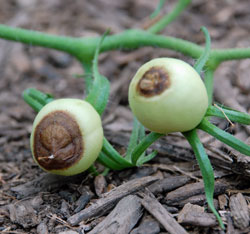
Typically, that date for central Ohio is May 20. Tomatoes are warm-season plants and should be planted only after danger of frost has passed unless you are prepared to protect them in the event of a frost. In addition, tomatoes are widely grown for fresh market by Ohio farmers and gardeners. Ohio is well suited for tomato production, and was once ranked second in the nation for processing tomatoes. Photo by Jodi Miller, formerly with OSU Section of Communications and Technology. Tomatoes are often eaten raw as a garnish for salads and appetizers. Photo by Ken Chamberlain, OSU Section of Communications and Technology.įigure 2. Tomato is the most popular home grown vegetable in the United States! Tomatoes come in many sizes and colors. Growing tomatoes in home gardens is an excellent investment of gardening time and money.
/close-up-of-beautiful-tomatoes-ready-to-be-harvested-624403694-5af207868e1b6e003909b96a.jpg)
Excess tomatoes can be canned for future use. Tomatoes are also used in soups, stews, and sauces. They can also be sliced for sandwiches and hamburgers, or added to various pasta, meat, and vegetable dishes. Tomatoes are often eaten raw as a garnish for salads and appetizers (Figure 2). For a list of community gardens, refer to the website for the American Community Gardening Association at. It is an excellent way to garden if space is limited and also a good way to learn as well as share gardening knowledge with others. Gardeners may rent a plot in a community neighborhood garden to grow vegetables. Another option is to participate in a community garden. Hence, gardeners who have limited space can still grow tomatoes. Some of the more compact tomato cultivars can be easily grown in containers. When grown as staked plants, tomatoes require a relatively small amount of space, yet are capable of producing 8 to 10 pounds or more of fruit per plant. Surprisingly enough, lycopene is absorbed better from processed tomato products than from fresh tomatoes. About 80 to 90 percent of lycopene consumed by humans comes from tomatoes. There has been a lot of medical and nutritional research on lycopene incidentally, lycopene is responsible for the red color in tomatoes. Carotenoids are thought to have a number of health benefits, such as reducing the risk of developing cancer, cardiovascular disease, and macular degeneration. Nine different carotenoids have been identified in tomatoes, two of them are beta-carotene and lycopene. Tomatoes are also very well known for their high carotenoid content. The tomato is rich in vitamins C and A, and contains small amounts of the B vitamins and potassium. One medium-sized tomato has only 35 calories. Eaten raw or in innumerable cooked dishes, the tomato is an almost daily part of the American family diet. The tomato was not recognized as a useful vegetable until the 1800s. Thomas Jefferson was one of the first to grow tomatoes, which were called "Love Apples" at the time. It was once thought by early American colonists to be poisonous. The tomato was first introduced to the United States in the 1700s. “Tomati” was the name used by Native Americans. There are many related wild species in South America. Originating in Central and South America, the tomato was domesticated in Mexico.

The tomato is probably the most widely grown vegetable by the home gardener because of its food value, many uses, and relative ease of culture (Figure 1).


 0 kommentar(er)
0 kommentar(er)
